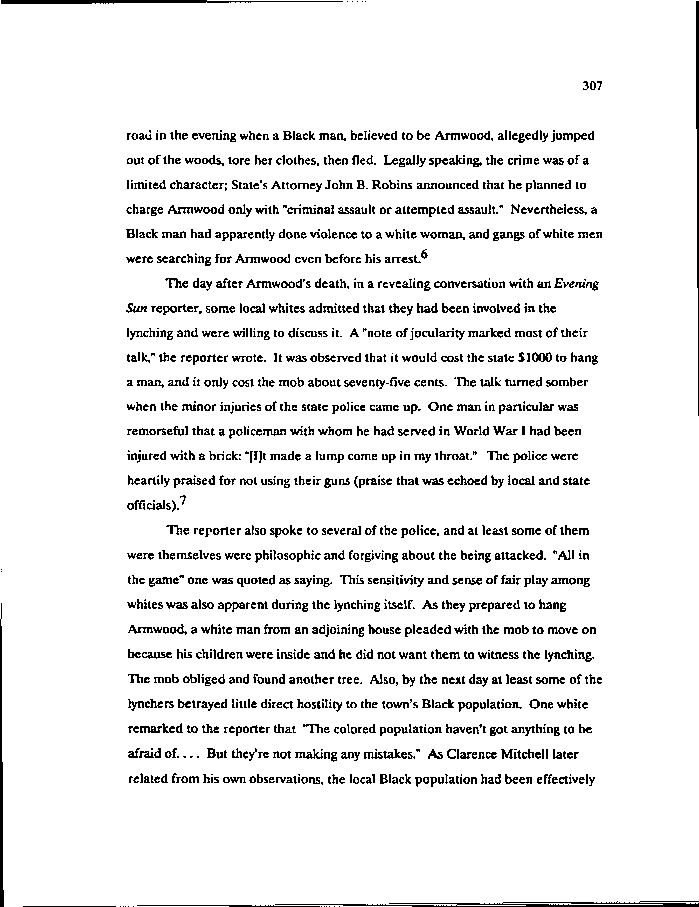|
307
road in the evening when a Black man, believed to be Armwood, allegedly jumped
out of the woods, tore her clothes, then fled. Legally speaking, the crime was of a
limited character; State's Attorney John B. Robins announced that he planned to
charge Armwood only with "criminal assault or attempted assault." Nevertheless, a
Black man had apparently done violence to a white woman, and gangs of white men
were searching for Armwood even before his arrest.
The day after Armwood's death, in a revealing conversation with an Evening
Sun reporter, some local whites admitted that they had been involved in the
lynching and were willing to discuss it. A "note of jocularity marked most of their
talk," the reporter wrote. It was observed that it would cost the state $1000 to hang
a man, and it only cost the mob about seventy-five cents. The talk turned somber
when the minor injuries of the state police came up. One man in particular was
remorseful that a policeman with whom he had served in World War I had been
injured with a brick: H[I]t made a lump come up in my throat." The police were
heartily praised for not using their guns (praise that was echoed by local and state
•j
officials).'
The reporter also spoke to several of the police, and at least some of them
were themselves were philosophic and forgiving about the being attacked. "All in
the game" one was quoted as saying. This sensitivity and sense of fair play among
whites was also apparent during the lynching itself. As they prepared to hang
Armwood, a white man from an adjoining house pleaded with the mob to move on
because his children were inside and he did not want them to witness the lynching.
The mob obliged and found another tree. Also, by the next day at least some of the
lynchers betrayed little direct hostility to the town's Black population. One white
remarked to the reporter that "The colored population haven't got anything to be
afraid of.... But they're not making any mistakes." As Clarence Mitchell later
related from his own observations, the local Black population had been effectively
|

